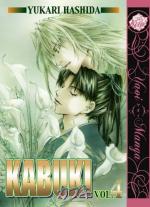|
This section contains 11,692 words (approx. 39 pages at 300 words per page) |

|
SOURCE: Scott, A. C. “Plays and Playwrights.” In The Kabuki Theatre of Japan, pp. 199-235. London: George Allen and Unwin, 1955.
In the following excerpt, Scott explains that in the early years of Kabuki's development, the play and playwright did not assume as central role as they have always done in Western theater—since dialogue was only as important as movement, gesture, music, and dance—and points out that the craft of writing for the theatre eventually developed into a profession of which there were several notable Kabuki practitioners who produced enduring works, including the hugely popular Chūshingura.
The Kabuki play has always laid great emphasis on visual appeal and pictorial effect. In a sense all drama aims at visual appeal, but whereas in the Occident, at any rate in more orthodox playwriting, any visual effect is merely a support to the all important spoken word, the reverse...
|
This section contains 11,692 words (approx. 39 pages at 300 words per page) |

|


